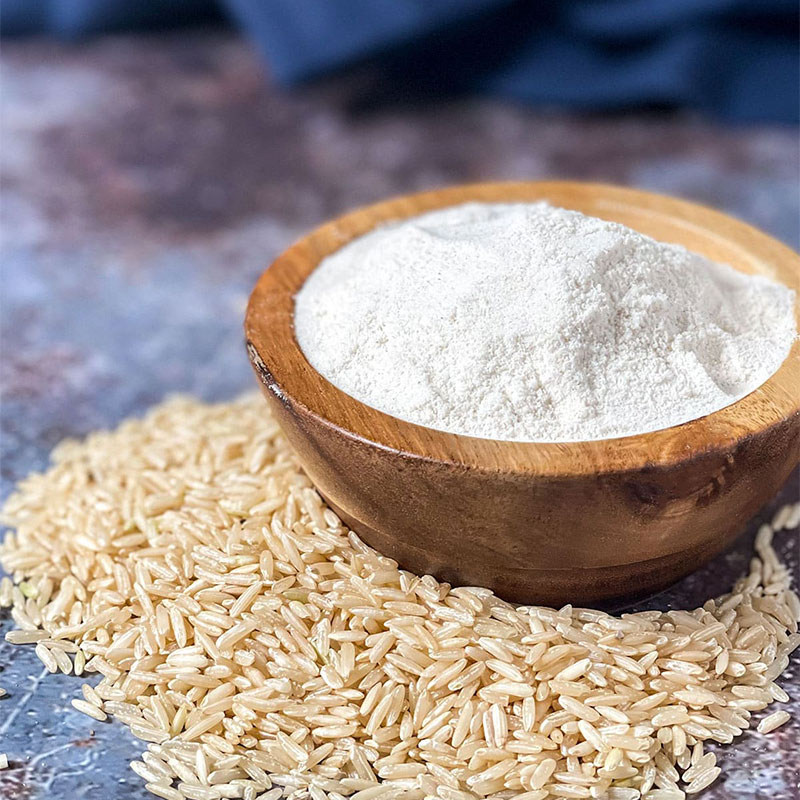July 29, 2024
Rice Flour 101: Everything You Need to Know
 The last time you stepped into the baking aisle at your local grocery store, you probably noticed the wide variety of flour on the shelf. With the explosion of gluten-free and allergen-friendly options available on the market in recent years, wheat flour alternatives are having a moment—and rice flour is at the top of the class.
The last time you stepped into the baking aisle at your local grocery store, you probably noticed the wide variety of flour on the shelf. With the explosion of gluten-free and allergen-friendly options available on the market in recent years, wheat flour alternatives are having a moment—and rice flour is at the top of the class. It’s one of those ingredients that’s a staple in many kitchens, yet it can still be a bit of a mystery if you’ve never cooked or baked with it before. But don’t let that intimidate you! Rice flour is incredibly versatile, simple to use, healthy, and allergen-safe for most people. So let’s dive into what rice flour is, how it’s made, and why it’s a must-have in your cooking repertoire.
What is rice flour, anyway?
Rice flour is exactly what it sounds like—flour made from finely milled rice, rather than wheat grains, like traditional baking flour. Rice flour can be made from either white or brown rice. It’s a great gluten-free alternative, making it perfect for those with food sensitivities, and is widely used by restaurants and chefs around the world to add unique texture and flavor to food.
How is rice flour made?
The process of making rice flour is relatively simple. If you’ve spent much time on this blog, you may already know that all white rice starts off as brown rice. At the rice mill, rice straight from the farm (often called “rough rice” or “paddy rice”) is milled in machines to remove the tough, inedible husk around each grain. Once the husk is removed, you’ve got brown rice, which retains a layer of bran (where much of the rice grain’s nutrients are stored). When brown rice is milled even further to remove that layer of bran, white rice is what’s left .
To make brown rice flour, the intact brown rice grains are milled into a fine powder, along with the layer of bran. White rice flour is made by milling the rice grain into powder without the bran.
The two types of rice flour have distinct characteristics: white rice flour has a finer texture and paler color, while brown rice flour retains more natural nutrients and a slightly nuttier taste. Both are amazingly versatile and can take your cooking or baking to the next level in different ways.
It’s important to note that U.S. rice mills don’t let anything go to waste! Inedible rice husks are recycled for a variety of sustainable purposes, and rice bran is also a highly useful and nutritious biproduct of the milling process that you can purchase in any grocery store. Plus, if you’re concerned about the carbon footprint of your eating habits, rice flour made from rice grown right here in the U.S. is the logical (and ethical) choice.
But is rice flour healthy?
Rice flour is low in fat and cholesterol-free , making it a great heart-healthy option. It’s also an excellent source of energy from carbohydrates, making it a perfect choice for active lifestyles. These good carbs also help boost serotonin levels in your brain, and rice naturally contains the amino acid known as GABA, so it’s truly a “feel-good” ingredient.
Brown rice flour has the added benefit of containing more fiber, vitamins, and minerals compared to its white rice counterpart. Of course, both brown and white rice are gluten-free and safe for most people with dietary restrictions and allergies. You can also be confident that flour made from rice grown and milled in the U.S. is produced with the highest possible standards of food safety and quality.
What can you do with rice flour?
An easier question to answer would be: what can’t you do with rice flour?
In Asian cuisine, it’s used to make rice noodles, dumplings, batter for fried foods, and even traditional desserts like mochi and cakes. It’s also a key ingredient in many gluten-free recipes, including bread, pasta, and cookies. Rice flour’s light texture makes it a great thickening agent for sauces and soups, and it can even be used to give a delightful crunch to bacon or French fries.
These are just a handful of uses, but the possibilities of rice flour are almost endless. It bakes well, fries well, coats well, and dissolves well. Rice flour is so versatile, you’ve probably eaten it many times without even knowing, as lots of restaurants rely on it to make their dishes crunchy, fluffy, or velvety.
So whether you’re looking to make a gluten-free cake, a crispy batter for frying, or just want to experiment with different textures, rice flour is the perfect tool to add versatility and innovation to your kitchen. Next time you’re at the store, grab a bag of rice flour and get cooking!
